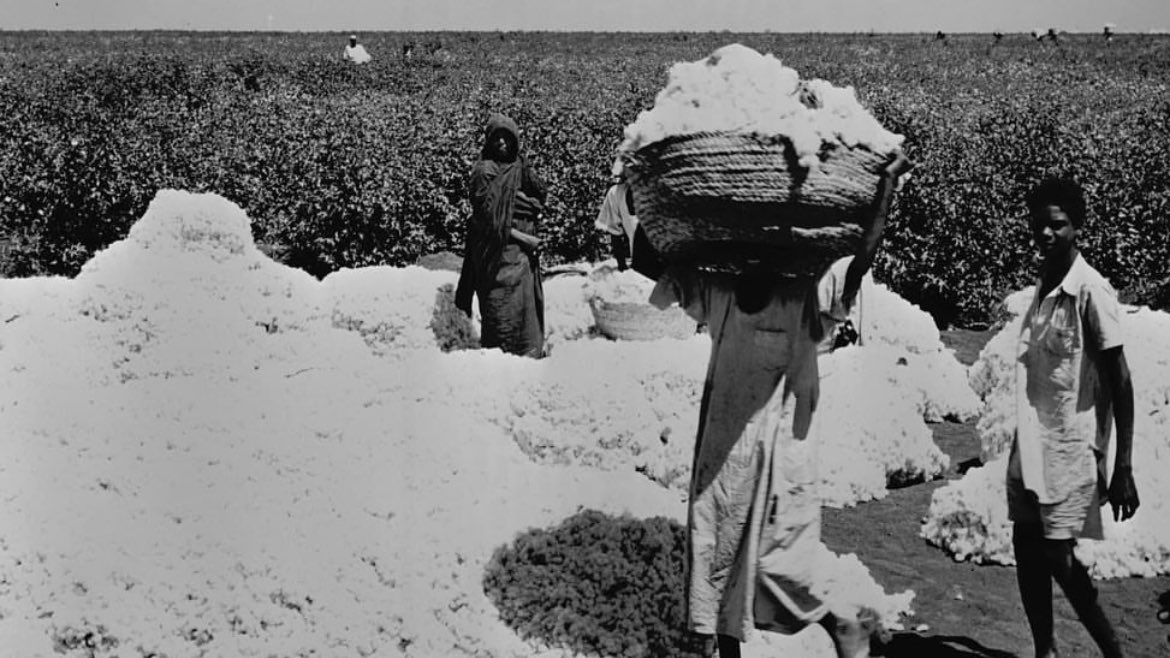
Empty Promises: What Remains of the World’s Food Basket?
Gazi Jabir
From a young age, we knew little of life beyond our playful innocence—chasing a rag ball (known as kurat al-shurab) and running behind school storage rooms after class. Amid these moments, the echo of the radio news bulletin rang in our ears, carrying an unforgettable phrase: “Sudan is the world’s food basket.” We memorized it, repeated it with pride, and believed our country was on the verge of becoming a major player in the global market.
Marches and demonstrations were organized in support of every regime that came to power—whether through democratic elections or the barrel of a gun. But the undeniable truth is that this phrase, despite its shine, was nothing more than an election slogan, not a lived reality.
They said Sudan was the food basket of the world because it had treasures: fertile lands among the richest globally, over 100 million head of livestock, the waters of the Nile, oil reserves, and gold. Yet between this rhetoric and the lived reality, the gap is vast.
Since the 1980s, Sudan has not experienced genuine economic stability, except for brief periods following political shifts. Most of the time, this semblance of stability was tied to new regimes attempting to patch up the damage of their predecessors—but never with lasting solutions.
After the fall of the Bashir regime, which left behind a battered economic legacy, the once-glorious image was completely shattered. The phrase “Sudan is the world’s food basket” became hollow, devoid of meaning in reality. During the rule of the National Islamic Front, the state’s approach to resources shifted: instead of developing them, it privatized them, as happened with the Gezira Project, once a symbol of that grand agricultural dream.
The Gezira Project—spanning over 2.2 million acres—was a cornerstone of Sudan’s image as a food basket. Yet due to neglect, privatization, and mismanagement, it began to crumble. Farmers found themselves unable to irrigate their lands, despite paying heavy fees for canal maintenance that never happened.
Today, Sudan faces a severe economic turning point: the Sudanese pound has utterly collapsed, losing over 125% of its value against the dollar, according to the 2024 World Bank report. Inflation reached 230% in 2023 and is expected to hit 180% in 2024. The pound holds almost no value in the market, and every day brings new price hikes.
How can a country with over six operational sugar factories see a kilogram of sugar sold for 3,000 Sudanese pounds? How does it make sense that a liter of groundnut oil costs 5,000 pounds, and a sack of wheat flour exceeds 85,000 pounds?
Reports state that more than 98% of government spending goes to the military, while schools crumble, roads are riddled with potholes, hospitals are paralyzed, and farms go thirsty. Ironically, citizens have always hoped that each new government would fix their economic woes, only to end up with different faces but the same failed policies.
To this day, no comprehensive economic plan has been implemented—neither capitalist nor socialist. All that has been done are superficial measures that fail to address the root of the problem. Finance ministers are shuffled like clothes, yet no one asks: Why do we keep failing?
Today, according to World Bank reports:
Over 17.7 million Sudanese face acute food insecurity.
4.9 million people are on the brink of famine.
8.6 million people have been internally displaced by war, making Sudan the world’s largest displacement crisis.
All this unfolds while the Gezira Project teeters on the edge of complete collapse due to water cuts and the Ministry of Finance’s refusal to support companies responsible for maintenance work. The farmers have fulfilled their obligations, but the state has turned its back.
If this situation is not urgently addressed, there may be no Gezira Project left for the state to save—there may soon be nothing left to save at all.

